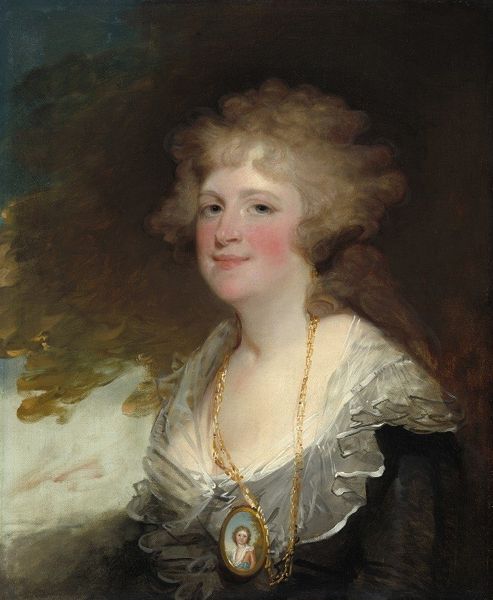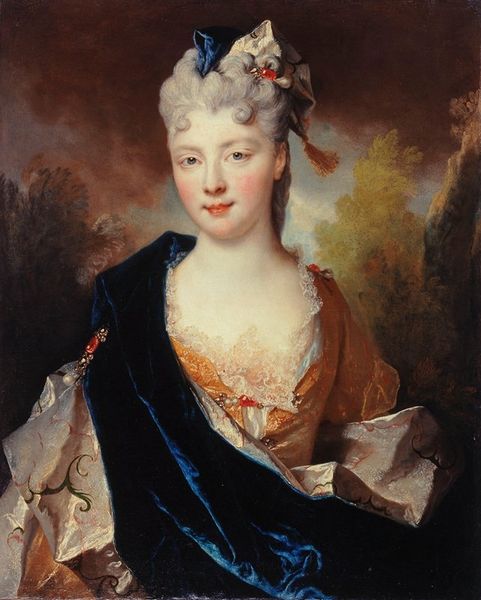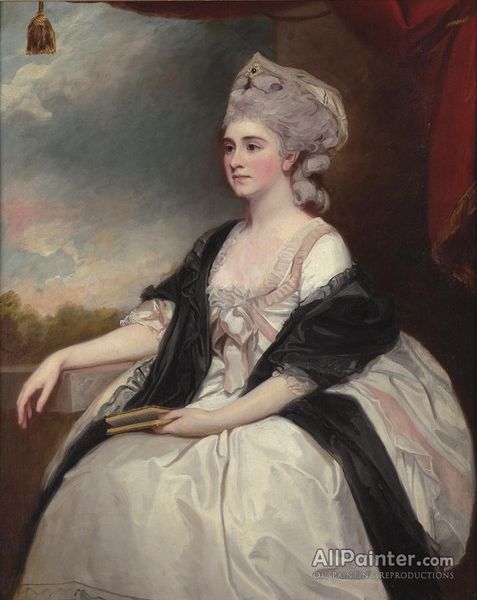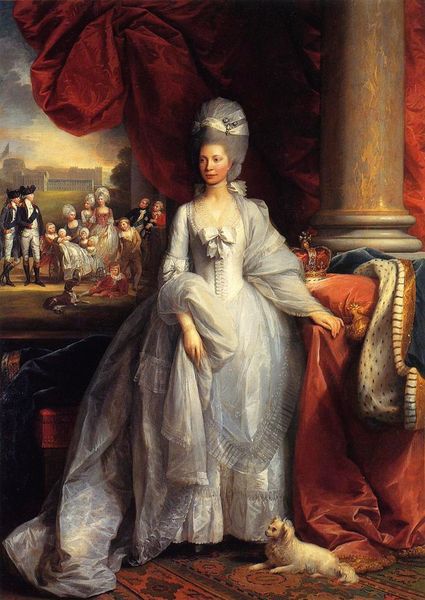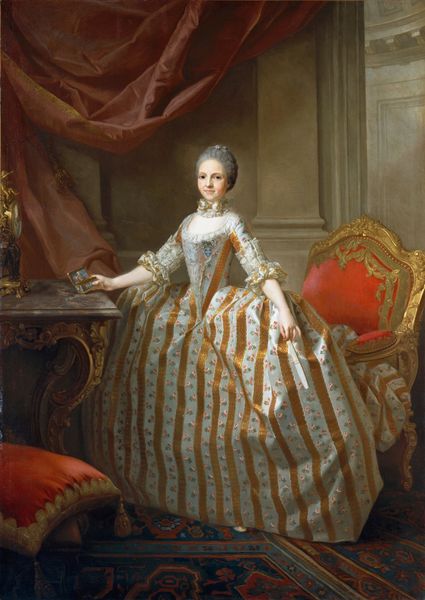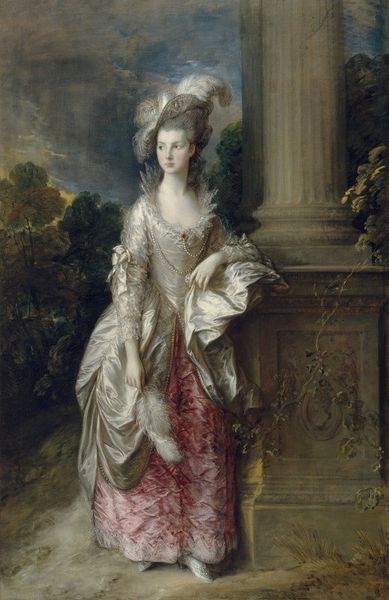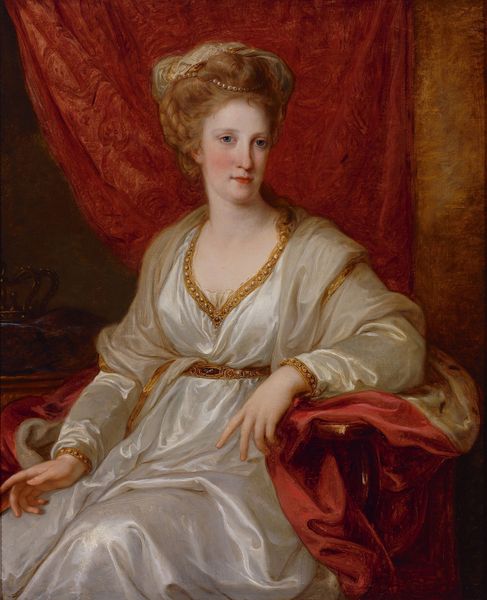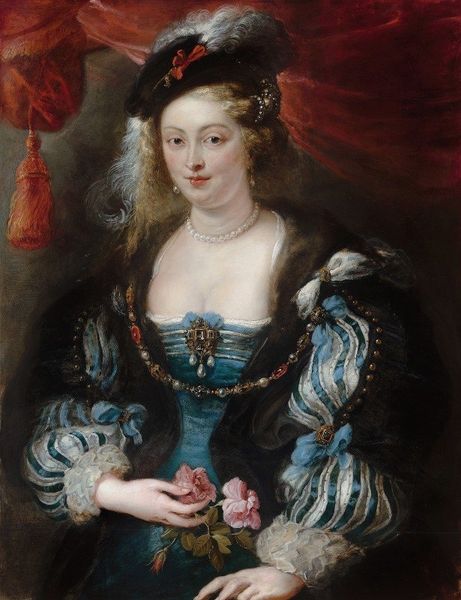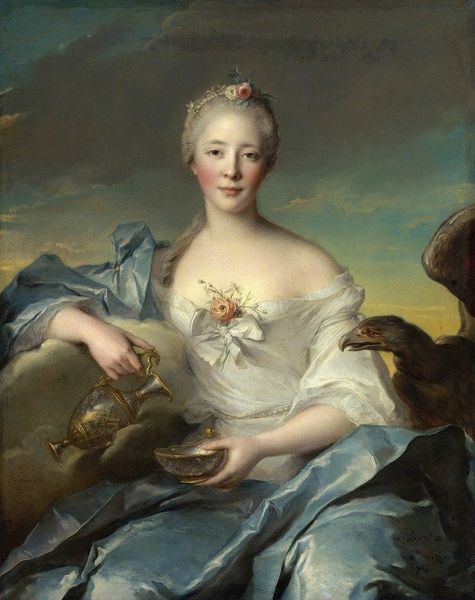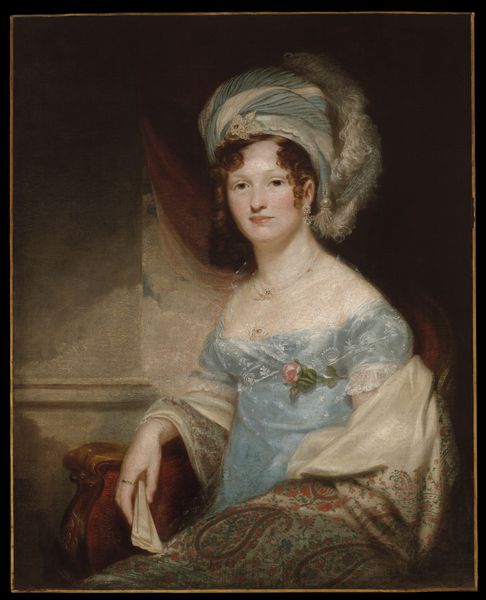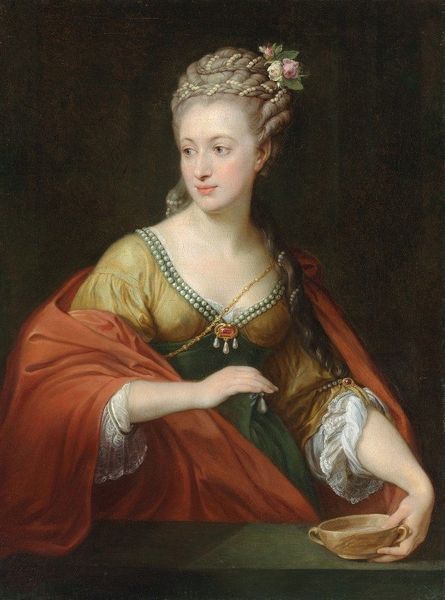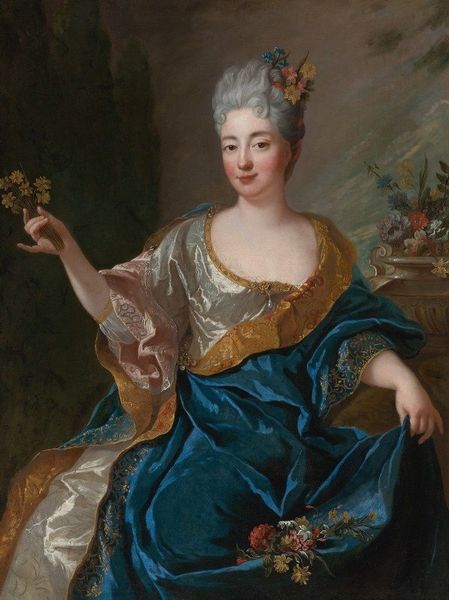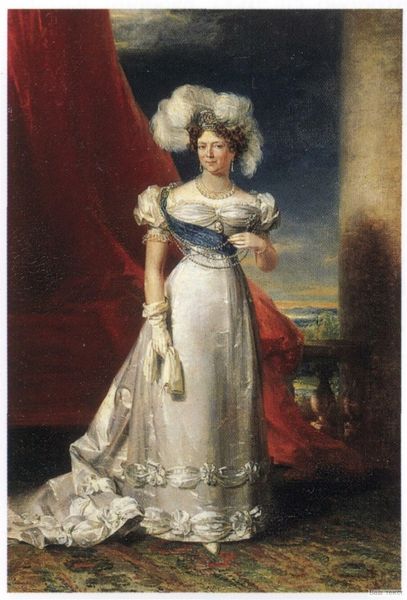
painting, oil-paint
#
portrait
#
figurative
#
painting
#
oil-paint
#
classicism
#
romanticism
#
history-painting
#
academic-art
Copyright: Public Domain: Artvee
Editor: So, here we have Gilbert Stuart's oil on canvas, "Matilda Stoughton de Jaudenes" from 1794. What immediately strikes me is the opulence – the fabrics, the feathers… How would you interpret this in terms of its historical context? Curator: Well, think about patronage and power. Portraiture like this, particularly of women, served a specific social function. It wasn't just about capturing a likeness. It was about solidifying status, communicating family ties, and circulating particular images of femininity. Who was commissioning these works, and what messages were they trying to convey? Editor: So, beyond aesthetics, it’s about projecting an image? Was there a standard “script” for female portraits at this time? Curator: To an extent, yes. Consider the visual language of Romanticism and Classicism merging here. The somewhat idealized beauty, the soft lighting, evokes Romantic ideals, but it's contained within a more structured, almost academic framework. Notice how she holds the fan, how her gaze meets the viewer… It’s carefully constructed to present her in a certain light. And of course, the books! What could they symbolize? Editor: Education, intellect… but also, perhaps, leisure, since she's not actively reading. What do you think this says about the politics of display? Curator: Precisely! These portraits were often displayed in domestic spaces, becoming part of a carefully curated environment that projected a particular narrative to visitors. They shaped not only how the subject was perceived, but also how her family wished to be seen within society. The overt symbols of wealth also remind of us that such pieces may function as a means for the perpetuation of a class hierarchy. Editor: I never considered how a portrait could be so performative and also so deeply embedded in the politics of its time. Curator: It’s a powerful reminder that art doesn't exist in a vacuum.
Comments
No comments
Be the first to comment and join the conversation on the ultimate creative platform.

